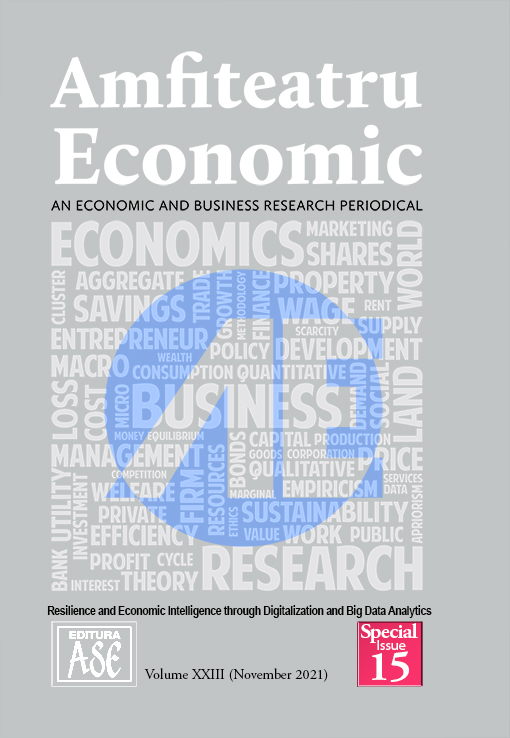Resilience of the European Union Economies. An Analysis of the Granger Causality at the Level of the Gross Domestic Product
Resilience of the European Union Economies. An Analysis of the Granger Causality at the Level of the Gross Domestic Product
Author(s): Mihai Păunică, Alexandru Manole, Cătălina Motofei, Gabriela Lidia TanaseSubject(s): Business Economy / Management
Published by: EDITURA ASE
Keywords: Gross Domestic Product; Granger causality; Final Consumption; Capital Formation; Changes in Inventories; Salaries; External Balance;
Summary/Abstract: Gross Domestic Product (GDP) is one of the most important indicators that reflects the evolution and resilience of national economies. The importance of this macroeconomic indicator is growing in the current economic context, context in which international studies start to emphasize the importance of resilience and sustainable development and in which the GDP can be seen either as an obstacle to sustainability, or a tool to protect the environment and achieve the resilience and sustainability goals. Consequently, the authors consider that understanding the formation of the GDP and the elements that exert an influence on it, remains of vital importance for the economy of a country or group of countries.The objective of the paper is to see if some of the indicators that are used to determine the GDP, respectively final consumption expenditure of general government, final consumption expenditure of households, gross fixed capital formation, changes in inventories, external balance – goods, external balance – services, wages and salaries and, respectively, employers’ social contributions, together with two indicators of final energy consumption, are Granger causing the GDP.The results obtained will indicate whether GDP can be predicted at a highly accurate level, by using not only the previous values of the GDP, but also the previous values of determining variables, and will also contribute to highlight those elements that have such an impact on the GDP, in order to better estimate its evolution and to have the possibility to influence its future values.To achieve the objective of the research, an approach based on the Toda-Yamamoto method of the Granger causality has been used, for the period 1995-2019, to evaluate the causality links in European Union-28 and the 28 countries member of the EU in 2019. The results obtained show that, for the geographical and time dimensions studied in this paper, the influence of the previously mentioned causal factors (in Granger’s acceptance) can be characterized as a causality in Granger sense only in a small number of cases.Thus, the Granger causality is demonstrated for the GDP of Netherlands (factor of influence, “final consumption expenditure of general government”), of the Republic of Cyprus (causal variables, “final consumption expenditure of households” and the “changes in inventories”), and also of the Czech Republic, Estonia, Latvia and Portugal (for the factor “final consumption expenditure of households”). In Portugal, the “external balance – goods” causes, in Granger sense, the GDP, while “wages and salaries” are emphasized ad influence factors of Granger causality type for Latvia and Slovakia. It has not been observed the existence of the Granger causality for the indicators “gross fixed capital formation”, “external balance – services”, “employers’ social contributions”, “final energy consumption – total” and “final energy consumption – industry”.
Journal: Amfiteatru Economic
- Issue Year: 23/2021
- Issue No: SI 15
- Page Range: 914-933
- Page Count: 20
- Language: English

